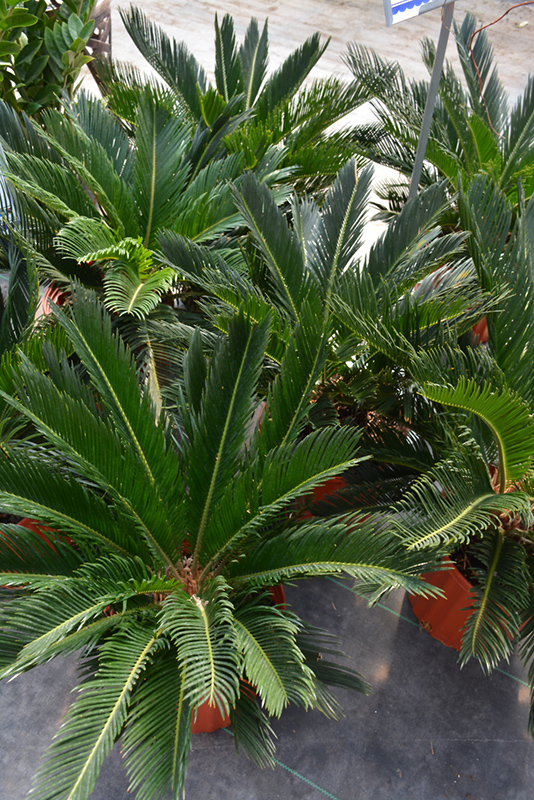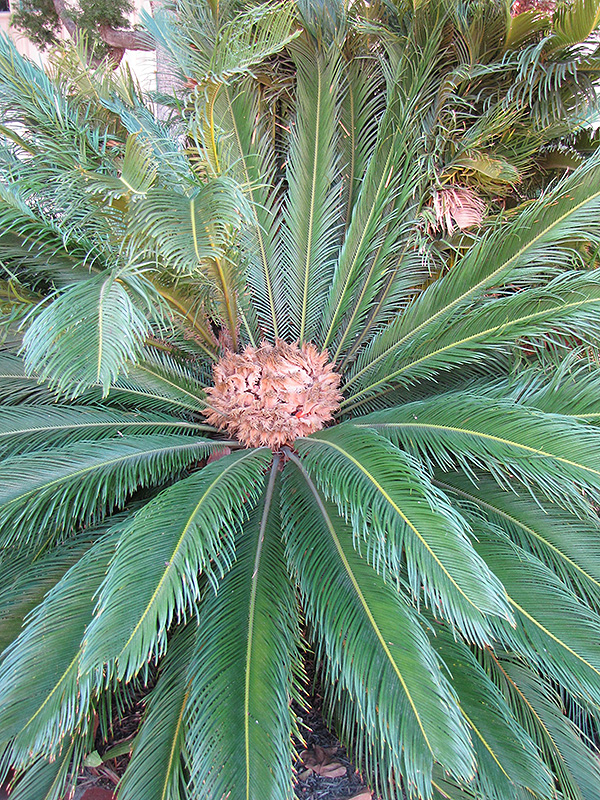Height: 3 feet
Spread: 4 feet
Sunlight:
![]()
![]()
Other Names: King Sago, Cycad, syn. Cycas miquelii
Description:
A very symmetrical plant with leathery leaves that resemble feathers; trunk is very low to subterrannean in young plants, but lengthens with age; very slow growing, and may eventually branch; a beautiful accent or container plant
Features & Attributes
Japanese Sago Palm features showy spikes of tan flowers rising above the foliage in mid fall. Its attractive large narrow pinnately compound leaves emerge chartreuse, turning green in color throughout the year.
This is a multi-stemmed evergreen houseplant with a shapely form and gracefully arching foliage. Its relatively fine texture sets it apart from other indoor plants with less refined foliage. This plant should not require much pruning, except when necessary to keep it looking its best.
Planting & Growing
When grown indoors, Japanese Sago Palm can be expected to grow to be about 3 feet tall at maturity, with a spread of 4 feet. It grows at a slow rate, and under ideal conditions can be expected to live for approximately 100 years. This houseplant will do well in a location that gets either direct or indirect sunlight, although it will usually require a more brightly-lit environment than what artificial indoor lighting alone can provide. It does best in average to evenly moist soil, but will not tolerate standing water. The surface of the soil shouldn't be allowed to dry out completely, and so you should expect to water this plant once and possibly even twice each week. Be aware that your particular watering schedule may vary depending on its location in the room, the pot size, plant size and other conditions; if in doubt, ask one of our experts in the store for advice. It is not particular as to soil pH, but grows best in sandy soil. Contact the store for specific recommendations on pre-mixed potting soil for this plant. Be warned that parts of this plant are known to be toxic to humans and animals, so special care should be exercised if growing it around children and pets.
There are many factors that will affect the ultimate height, spread and overall performance of a plant when grown indoors; among them, the size of the pot it's growing in, the amount of light it receives, watering frequency, the pruning regimen and repotting schedule. Use the information described here as a guideline only; individual performance can and will vary. Please contact the store to speak with one of our experts if you are interested in further details concerning recommendations on pot size, watering, pruning, repotting, etc.
-- THIS IS A HOUSEPLANT AND IS NOT MEANT TO SURVIVE THE WINTER OUTDOORS IN OUR CLIMATE --
A NetPS Plant Finder tool



